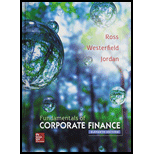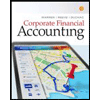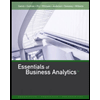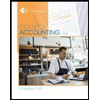
To determine: The number of periods of investment
Introduction:
The
Answer to Problem 5QP
The number of periods is as follows:
| Particulars | Years | Interest Rate | Future value | |
| Investment A | $560 | 15.59 | 6% | $1,389 |
| Investment B | $810 | 9.40 | 9% | $1,821 |
| Investment C | $18,400 | 26.41 | 11% | $289,715 |
| Investment D | $21,500 | 24.52 | 13% | $430,258 |
Explanation of Solution
Given information:
Investment A has a present value of $560, future value of $1,369, and an interest rate of 6 percent. Investment B has a present value of $810, future value of $1,821, and an interest rate of 9 percent.
Investment C has a present value of $18,400, future value of $289,715, and an interest rate of 11 percent. Investment D has a present value of $21,500, future value of $430,258, and an interest rate of 13 percent.
Formula:
Derive the formula to calculate the number of periods from the present value equation as follows:
The formula to calculate the number of periods:
Where,
“t” refers to the number of years or periods of investment
“ln” refers to the log value
“FV” refers to the future value
“PV” refers to the present value
“r” refers to the simple rate of interest
Compute the number of periods for Investment A:
Hence, the number of periods of Investment A is 15.59 years.
Compute the number of periods for Investment B:
Hence, the number of periods of Investment B is 9.40 years.
Compute the number of periods for Investment C:
Hence, the number of periods of Investment C is 26.41 years.
Compute the number of periods for Investment D:
Hence, the number of periods of Investment D is 24.52 years.
Want to see more full solutions like this?
Chapter 5 Solutions
Fundamentals of Corporate Finance with Connect Access Card
- Take value of 1.01^-36=0.699 . step by steparrow_forwardsolve this question.Pat and Chris have identical interest-bearing bank accounts that pay them $15 interest per year. Pat leaves the $15 in the account each year, while Chris takes the $15 home to a jar and never spends any of it. After five years, who has more money?arrow_forwardWhat is corporate finance? explain all thingsarrow_forward
 Corporate Financial AccountingAccountingISBN:9781305653535Author:Carl Warren, James M. Reeve, Jonathan DuchacPublisher:Cengage Learning
Corporate Financial AccountingAccountingISBN:9781305653535Author:Carl Warren, James M. Reeve, Jonathan DuchacPublisher:Cengage Learning Essentials of Business Analytics (MindTap Course ...StatisticsISBN:9781305627734Author:Jeffrey D. Camm, James J. Cochran, Michael J. Fry, Jeffrey W. Ohlmann, David R. AndersonPublisher:Cengage Learning
Essentials of Business Analytics (MindTap Course ...StatisticsISBN:9781305627734Author:Jeffrey D. Camm, James J. Cochran, Michael J. Fry, Jeffrey W. Ohlmann, David R. AndersonPublisher:Cengage Learning College Accounting, Chapters 1-27 (New in Account...AccountingISBN:9781305666160Author:James A. Heintz, Robert W. ParryPublisher:Cengage Learning
College Accounting, Chapters 1-27 (New in Account...AccountingISBN:9781305666160Author:James A. Heintz, Robert W. ParryPublisher:Cengage Learning- Principles of Accounting Volume 1AccountingISBN:9781947172685Author:OpenStaxPublisher:OpenStax College





